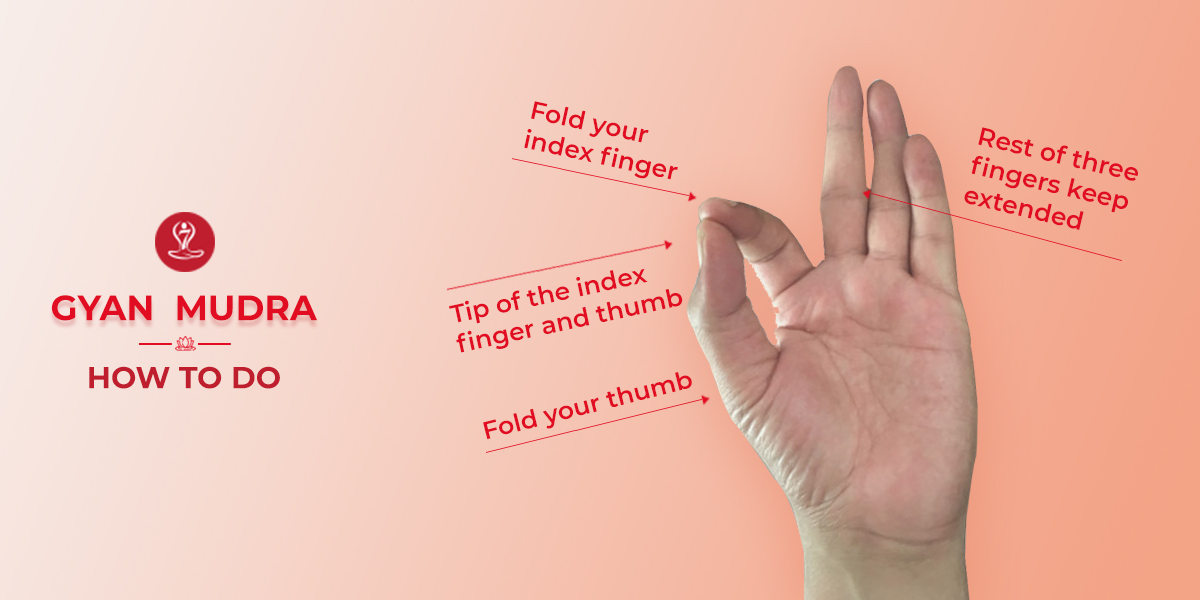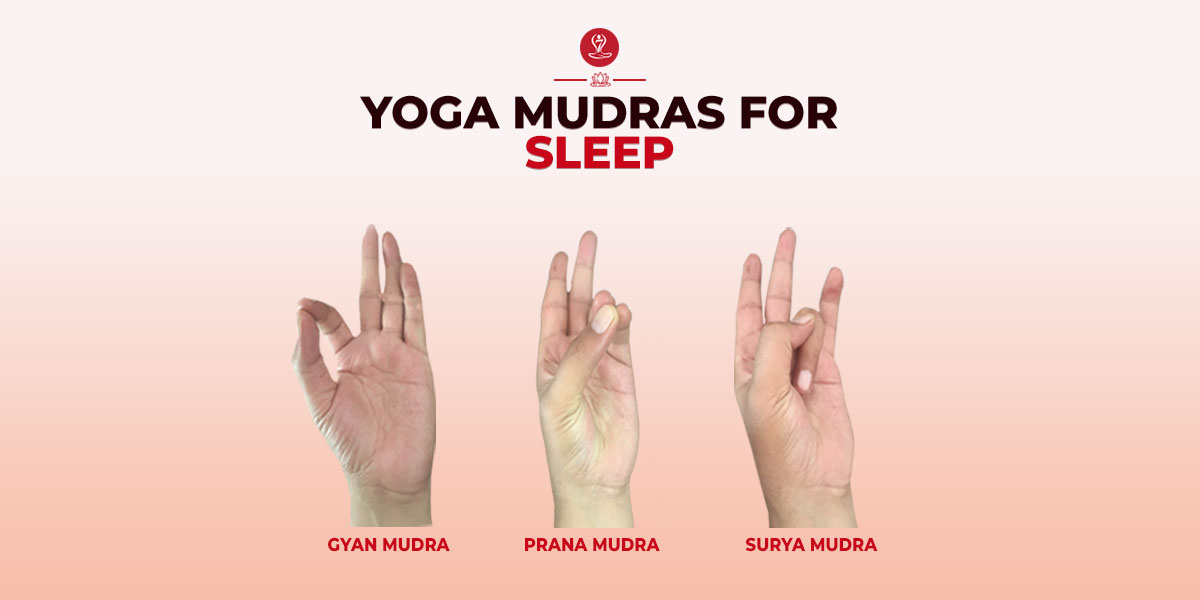
Yoga itself is completely related to balancing chakras with mudras that they open.
Yoga mudras, or hand gestures, are integral aspects of yoga that help guide the flow of energy within the body. These hand gestures are helpful in promoting healing and balance between the chakras—energy centers aligned along the spine—through the body’s energy channels, or Nadis.
Here are seven lesser-known mudras you can use to help meditate and open your seven main chakras.
Balancing Your Chakras with Mudras
Each mudra has its own specific purpose and benefits for a specific chakra, which helps to balance the body, mind and spirit. These mudras can improve physical health as well as harmonize chakras, remove imbalances and provide mental and emotional stability.
Prithvi Mudra to Balance Root Chakra
Prithvi means Mother Earth, and as the name suggests, this mudra connects you to Earth, promotes grounding, and stabilizes you. This grounding effect balances the root chakra and increases your stability and inner strength.
Use Prithvi Mudra to balance your root chakra. Concentrate on the energy provided by this Mudra.
Prithvi Mudra involves touching the ring finger to the thumb, as the ring finger represents the earth element, which directly influences the root chakra. Earth is considered to be one of the elements within the human body. Hence, Hasta Mudra performed with the ring finger is known as Prithvi Mudra.
How to Perform Prithvi Mudra
- Sit in a comfortable posture and place the hands on the thighs or knees, palms facing upwards.
- Close your eyes and take a few deep breaths.
- Now bend your ring finger and tap the tip of the ring finger with the tip of the thumb.
- The remaining three fingers should be kept as spread out as possible.
- Hold this position while focusing on deep, calming breaths.
Implement Prithvi Mudra into your meditation or yoga sessions to strengthen your root chakra.
Shakti Mudra to Balance Sacral Chakra
Shakti mudra is commonly practiced in yoga to enhance strength, vitality, and energy flow within the body. This mudra is believed to help awaken and channel the divine feminine energy, often referred to as shakti, that resides within each individual. It has a replenishing effect on the reproductive system and fosters a sense of inner power and potency.
Use power pose to balance your sacral chakra. The energy provided by this mudra helps you connect with your emotions and creative energies.
How to Perform Sacral Mudra
- Close your eyes and place your thumb on your palm and press it with your index and middle finger.
- Make sure that your ring finger and little finger remain straight.
- After this, bring both your hands near your chest and touch the ring finger of both the hands with the ring finger and the little finger with the little finger.
- Make the fists of both your hands together.
Surya Mudra to Balance Solar Plexus Chakra
The word Surya comes from Sanskrit. Here Surya means “sun” and mudra means “gesture”.
According to Ayurveda, Surya Mudra is related to the sun, which represents inner fire and personal power. Visualize a bright sun within your solar plexus and focus on the warmth and energy you receive from this mudra. This practice strengthens your inner resilience and determination, can re-energize the mind and body, and provide a feeling of power and vitality.
How to Perform Surya Mudra
- Close your eyes and touch the tip of your ring finger to the base of your thumb.
- Gently press the thumb onto the ring finger.
- Keep the other three fingers straight but relaxed.
Padma Mudra to Balance Heart Chakra
Padma means ‘lotus’, which helps to make your mind, thoughts and feelings positive towards others.
The lotus mudra (padma mudra) which looks like a lotus flower is designed to open the heart chakra and channelize energy in the body. This mudra connects us to the anahata chakra or heart chakra which resides in and around the heart.
Practicing this mudra can help open the heart center, activate the anahata chakra which is radiating love and dissolving emotional barriers. This practice helps you open your heart and connect deeply with yourself and others.
How to Perform Padma Mudra
- Bring both hands in front of the chest or make anjali mudra.
- Thumbs pointing towards the chest.
- Next, you have to spread the index, middle and ring fingers in different positions like an open lotus.
Akash Mudra to Balance Throat Chakra Mudra
Akasha Mudra aligns with the throat chakra’s role in communication and expression, which enhances the space element.
According to traditional Indian philosophy, Akash Mudra is believed to enhance the space element (akash) within the body.
In Sanskrit, “akash” means “sky” or “space”, and this mudra helps connect with the expansive qualities associated with the space element. It is believed that practicing this mudra can help develop a sense of spaciousness, openness, and clarity in one.
How to Perform Akash Mudra
- Bend your middle finger and touch the tip of the middle finger with the tip of the thumb.
- The remaining three fingers should be kept as spread out as possible.
Kalesvara Mudra to Balance Third Eye Chakra
Kaleshwar Mudra involves specific hand gestures that are used in yoga and meditation practice for their calming effect on the mind and controlling thoughts and emotions, affecting both psychological and physical health.
This mudra helps regulate the flow of prana (life force energy) through the body’s nadis. This balanced energy flow is important for activating and harmonizing the Ajna Chakra.
The Ajna Chakra, located between the eyebrows, is associated with intuition, insight, wisdom, and inner vision. It is considered the seat of higher consciousness and spiritual realization.
How to Perform Kalesvara Mudra
- Place your hands in front of your chest (heart center).
- Join your middle fingers with the tips pointing upwards.
- Curl your index, ring and pinky fingers inwards.
- Bring your thumbs together with the tips pointing downwards and maintain this pose while focusing on deep and calm breathing.
- Make a heart shape with your folded index fingers and extended thumbs.
Hakini Mudra to Balance Crown Chakra
The Hakini Mudra gets its name from Hakini, which means “power” or “rule”, involves touching the tips of all fingers together, which increases the functionality of the brain or mind power.
As it refers to the power of the mind, it is also called the crown chakra mudra of the mind or brain.
It is believed that Hakini Mudra restores the balance of our brain, thereby awakening the individual and enhancing both his creative decision making and logical thinking. That is why it is one of the most practiced mudras in yoga.
Hakini mudra circulates energy in the body and also presses on the acupressure points present in the hands, thereby activating many organs of the body. If this mudra is performed using tryambadha (mool bandha, uddiyana bandha and jalandhara bandha), then it promotes communication between the left and right hemispheres of the brain, thereby boosting the energy of the crown chakra.
How to Perform Hakini Mudra
- Sit comfortably and bring your hands together, gently touching the tips of all your fingers.
- Keep the palms of both hands facing each other.
Conclusion
To balancing Chakras with Mudras Incorporating above yoga mudras into your daily practice.
Each mudra focuses on a specific energy centre, helping to clear blockages, restore balance, and enhance overall well-being. You can also incorporate the mantra associated with each chakra to enhance your meditative experience.
RELATED ARTICLES
Jul 22, 2024
Palm Itching Meaning: Discover the Behind This Ancient Belief
An old superstition, a sign of palms itching, has indeed become a matter of discussion. The medium of these signs[...]
Jul 22, 2024
Gyan Mudra: Importance, How to do, Benefits, Side Effect
The term "mudra" refers to hand gestures used during meditation in both Hindu and Buddhist traditions. Mudras are central to[...]
Jul 17, 2024
Improve Sleep with These Effective Hand Mudras for Sleep
If you are struggling with sleep, incorporating specific mudras into your routine can help. Regular practice of these hand gestures,[...]
RECENT POSTS
Disclaimer
The content is purely informative and educational in nature and should not be construed as medical advice. Please use the content only in consultation with an appropriate certified medical or healthcare professional







